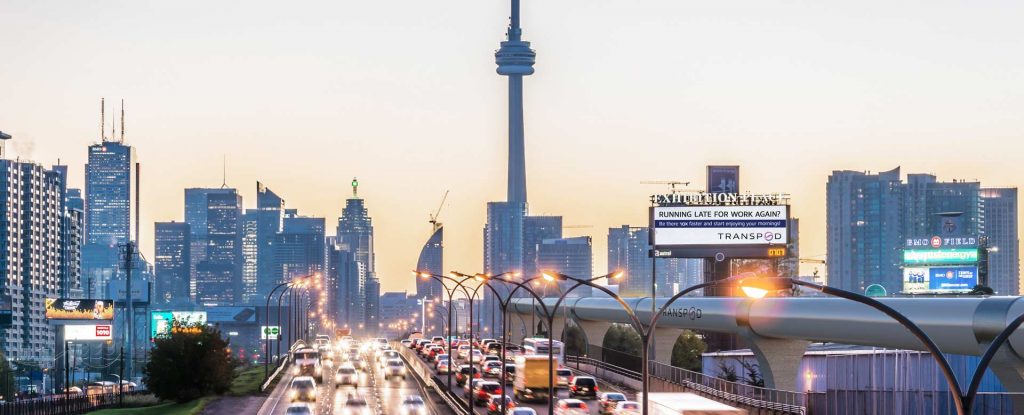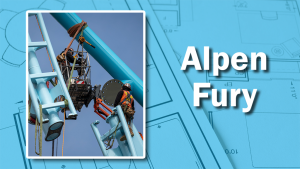All of a sudden, Ontario’s proposed Windsor-to-Toronto high-speed train seems as archaic as a horse and cart.
Two-hundred and fifty kilometres per hour? Two hours in transit? Those numbers are glacial compared with the claims of the Toronto-based start-up TransPod, whose hyperloop system would whisk lightweight composite-fibre passenger pods through four-metre-tall vacuum cylinders using a proprietary frictionless magnetic levitation system at speeds of up to 1,000 kilometres per hour (km/h).
Travelling that fast at top speed, and averaging 700 km/h, Windsor to Toronto would be 30 minutes — faster than a plane. Barrie to Toronto? TransPod co-founder and CEO Sebastien Gendron says the pods would not be able to reach maximum velocity on such a short haul but still the trip would only be 15 to 20 minutes.
It’s technology that would not only transform long-distance intercity transportation but also roadways, housing, employment recruiting, carbon usage forecasts and more, Gendron said.
But is hyperloop technology near ready for commercialization?
“I would say, the infrastructure piece is the easiest part,” Gendron said.
“It is not how it is going to work anymore but more when and who will do it.”
Hyperloop technology only came into public consciousness in 2013 when it was discussed by tech guru Elon Musk. His vision was quickly seized upon by engineers and investors around the world, notably in China, South Korea, Japan and the U.S. The Koreans have taken the boldest steps forward to this point, with many millions in government funding in place and tests well underway.
TransPod was founded in 2015 by Gendron, a Frenchman, and Ryan Janzen, a Canadian University of Toronto grad. The firm has accumulated an international workforce of product developers, confirmed $20 million in research and development funding last fall (with future seed goals of $50 million this year and $100 million next), developed relationships with transportation players such as EllisDon, Hatch and Quebec’s Caisse de depot and consulted with Prime Minister Justin Trudeau and federal Minister of Transport Marc Garneau.
TransPod announced itself to the broader public on July 13 by releasing documents indicating it could do the Windsor-to-Toronto corridor not only four times as fast as the high-speed train the federal and provincial governments have been supporting but at half the cost — $10.3 billion to $20.9 billion, the price tag associated with a 250 km/h train.
TransPod’s recent announcement was intended to reach two audiences, Gendron said, investors and governments. The provincial government is currently acting on a report prepared by former federal Minister of Transport David Collenette supporting next steps on the Windsor-Toronto proposal and has allocated $15 million for a feasibility study. Gendron said hyperloop should be considered among options for Windsor-Toronto.
“The age of high-speed rail has come and gone, and the technology will soon be obsolete,” said Gendron in the July 13 statement. “We strongly urge the Government of Ontario to consider hyperloop feasibility, for its cost efficiency and speed advantages, in its next assessment.”
Actually, said Gendron, the Windsor-Toronto line is not TransPod’s first choice for the launch of hyperloop. Montreal-Toronto and Edmonton-Calgary are preferable in terms of ridership and potential cargo shipments, and he said when TransPod constructs its first four-kilometre test track — ideally the test build would start next summer — it would be in one of those corridors.
TransPod aims to have the test track ready to test prototypes by 2019, with commercialization targeted for 2022.
A recent TransPod research document indicates a typical hyperloop corridor will be 40 metres wide during construction including a service road for maintenance, emergency services and construction purposes, to be reduced to 30 metres when construction is complete.
An elevated guideway system would include 40 piers per kilometre, four pumping stations with associated electrical controls per kilometre, two emergency exits per kilometre and one power substation to allow an electrical connection to the grid every five kilometres. TransPod vehicles will be propelled by linear induction motors and levitate using an active magnetic system proprietary to TransPod. Hyperloop tube infrastructure would be built in prefabricated sections that are erected in place.
Gendron said attracting the attention of the former astronaut Garneau is a distinct asset. The minister’s office acknowledged Garneau’s awareness of the hyperloop option in response to an email query.
A spokesperson wrote in an email that the federal Transportation 2030 initiative encouraged innovation, and also said, “The successful international commercialization of hyperloop technology is something that the Government of Canada is watching closely, as it may transform the way people and goods are moved, the cost at which transportation can take place, and the development of affordable transportation solutions for the world’s developing economies.”
Gendron said he met with Trudeau at the recent G7 summit in Italy.
He added provincial Minister of Transportation Steven Del Duca has not yet responded to entreaties.
Asked for comment, Transport Futures founder Martin Collier cautioned that Canadians are “very technology averse” and may not jump on a new idea like hyperloop until there is a critical mass of acceptance. And the provincial government has invested substantial capital, financially and politically, in other programs.
In June, TransPod announced a partnership with Liebherr-Aerospace to develop cabin and vehicle thermal systems. Other product development partners include Blackshape Aircraft, Sitael, Mermec, Ikos, REC Architecture and MaRS Discovery District.
The infrastructure and property needs seem daunting but Gendron said owners of electrical utilities corridors have been responsive, eyeing a new revenue stream. Automobile corridors are another option, but Gendron chuckled when saying CN and CP, obvious rivals, have shown no interest in sharing train rights of way.

1/2
Photo:











Recent Comments
comments for this post are closed